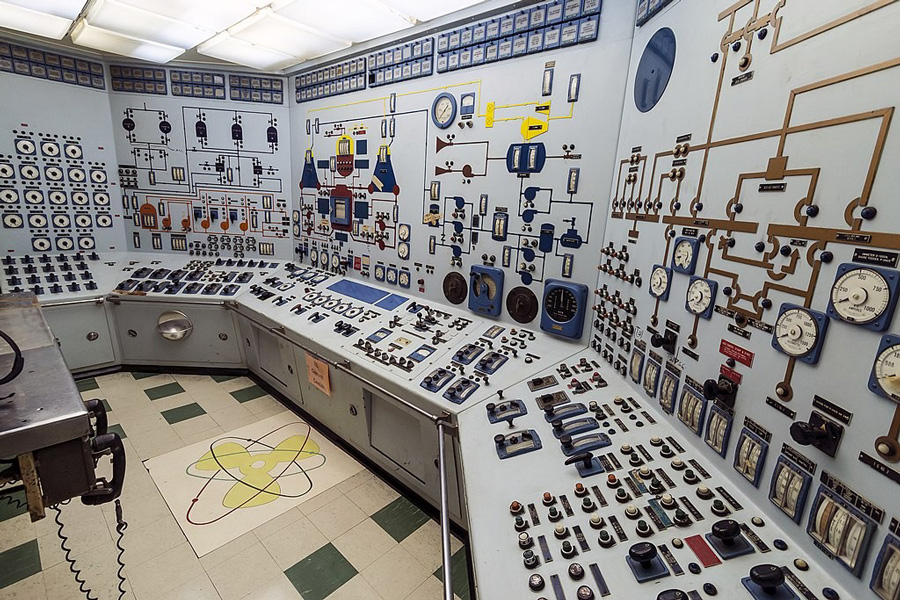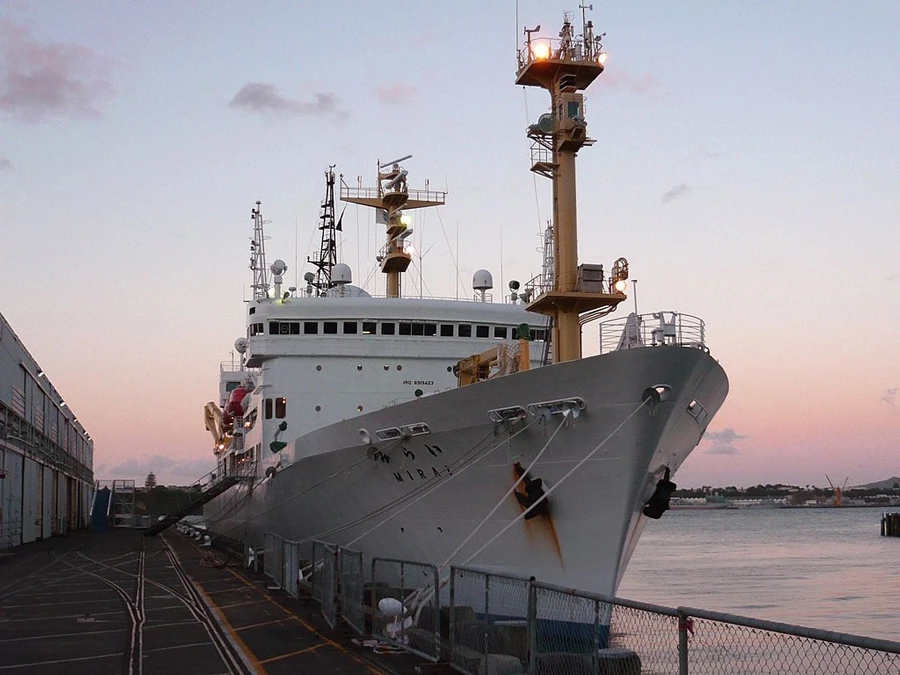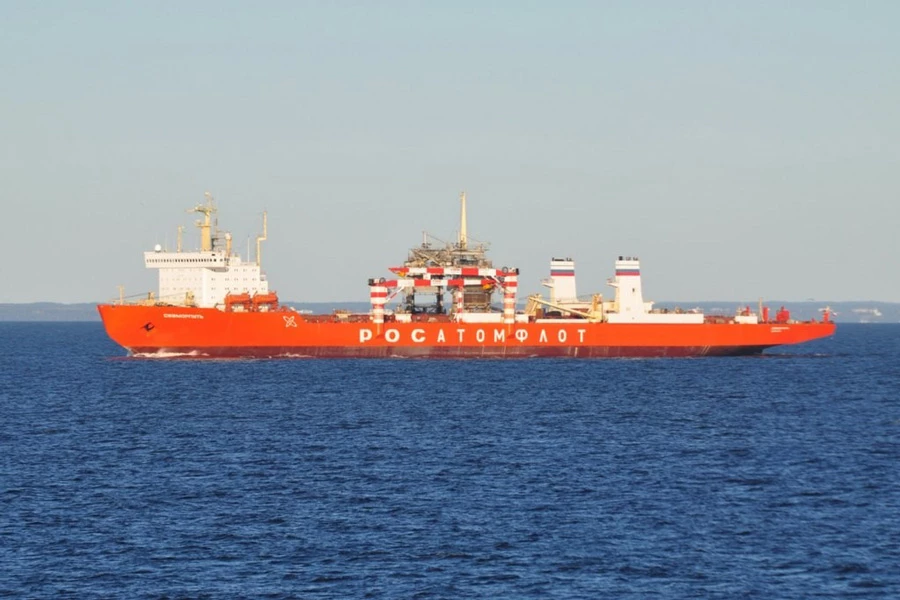Nuclear power is, in theory, the best large-scale method of generating energy we currently have. Huge amounts of useable energy can be generated for long periods of time from comparatively compact reactors, with limited waste materials in manageable amounts.
Of course, this viewpoint overlooks the significant problems with this form of energy production, which can almost always be traced back to human error and mismanagement. Reactors can leak or even explode, leading to catastrophic, widespread and extremely long-term damage.
Given this it is not inconceivable that, were we to adopt nuclear power on a grand scale, it would only be a matter of time before the accidents which accumulated due to our own incompetence. This, combined with the long lasting effects, could render our planet uninhabitable. However, it was not always seen that way.
Back in the 1950s, at the dawn of the global nuclear age, it was seen as the bright hope for the future. Nuclear power was several orders of magnitude more efficient and potent than anything that had been seen before, and the world confidently expected that fission reactors would power humanity into a golden age.
We know now that didn’t happen. Nuclear power is the preserve of governments and the only confirmed mobile reactors are used on the military vessels of the United States, Russian, British and French navies, although China claims to operate nuclear submarines as well.
But it was not always this way. There were going to be nuclear aircraft, nuclear spaceships. And, for a brief moment, the world toyed with nuclear-power of civilian ships, even passenger ships. What happened to this dream, and why did this dream for the future never come to fruition?
The NS Savannah
The Nuclear Ship (NS) Savannah was the first merchant ship to be powered by nuclear power. Built at a cost of $46.9 million in the late 1950s, or which $28.3 million was spent on her nuclear reactors and fuel core, she was launched on July 21, 1959.

She received the full support of the United States government in her construction and design, who saw Savannah as a demonstration project for nuclear energy’s potential. The ship was named after the historic first steamer to cross the Atlantic, the SS Savannah.
US President Dwight D. Eisenhower had proposed building a nuclear-powered commerce ship to promote his Atoms for Peace campaign four years earlier in 1955. The Atomic Energy Commission, the Maritime Administration (MARAD), and the Department of Commerce started work on designing Savannah the following year.
Designed by George G. Sharp and built by The New York Shipbuilding Corporation at Camden, New Jersey, she was seen as the ultimate halo project, leading the way into the nuclear age. On July 21, 1959, she was christened by US First Lady Mamie Eisenhower at the ship’s launching.
Savannah made history as the first nuclear-powered ship to dock in New York City. She was the star of Nuclear Week In New York, a citywide information event. Thousands of visitors came to Savannah to tour the city and attend special activities.
Although comparatively small at just 596 ft (181 meters) long, she still made quite an impression. Her futuristic lines were deliberate, to suggest a sleek, fast and clean form of transport, almost like something out of science fiction.
And with a reactor designed for safety, she was able to carry both crews and cargo around the world. During her 12 year operational life, she toured the world, crossing the Atlantic many times to Europe and also travelling to South America, as alien and futuristic as the Nazi zeppelins had seemed a generation earlier.
So What Happened?
Why, then, did she have so short a service life? And why was NS Savannah not only the first, but the only ship of her class?
The truth is that for all its visual appeal her design was compromised from the start. She could carry both passengers and cargo but this meant she did not excel as either a passenger or cargo ship, having limited space for either.
Her radical design and the inherent dangers of her reactor meant that entry to major ports required months of paperwork, and she was regularly refused access to the docks and cities which would have made her a success. Put simply, foreign governments and the public were too squeamish to embrace nuclear ships until they had been proven safe beyond a doubt.
Nuclear vessels were also not insured in the same way that conventional ships are. Accidents can have far-reaching implications that cross national borders, and the quantity of potential harm is well beyond the capacity of private insurance.
Nuclear-powered submarine decommissioning and waste management is also a formidable task. In the United States, after defueling the reactor component is taken from the vessel and buried as low-level waste in shallow ground.
In Russia, complete vessels or sealed reactor components are normally housed afloat, while a planned facility near Sayda Bay will enable storage for some submarines in the far north in a concrete-floored structure on land. Either way, waste management is an ongoing cost only a government can really afford.
And, in due course, the extent of public distaste for nuclear power in civilian hands was demonstrated. Other nations, including Russia and Germany, had seized on the US initiative and built their own civilian nuclear ships. But an accident on the Japanese nuclear-powered cargo ship Mutsu on 1 September 1974, although minor, killed the dream forever.

There had already been protests against the launch of Mutsu when her reactor was first fired up. But when it was revealed that the reactor had leaked, even though the radiation was not dangerous the outcry was huge. Japanese fishing boats blocked Mutsu in open water where the test had occurred, refusing to allow her back into port.
Mutsu never operated as a cargo ship, and was decommissioned when her use as a nuclear testbed came to an end. The Germans converted their nuclear ship to diesel in 1979, and the Russians, although they continue to operate a nuclear cargo ship, never adopted the technology on a wide scale either.
The End of the Dream
By this point, Savannah was long gone. With hindsight, it is clear that her design and limited cargo space made her little more than an exercise in public relations. She could carry 8,500 tonnes (9,370 US tons) of cargo, and her sleek hull made loading the forward hulls challenging.
She had also missed several of her targets as a nuclear testbed and proof of concept. The ship was designed to be able to hold 10,000 gallons (37,850 liters) of liquid radioactive waste, however, this was frequently exceeded. She had to release almost 115,000 gallons (435,000 liters) of low-level radioactive water into the sea in her first year.
Her challenges were also broader than the ship design itself. Much as with these early days of electric vehicles, the support infrastructure and economies of scale provided by mass adoption are required to make the approach viable. Without an infrastructure capable of managing nuclear ships, she was simply too expensive.
Thus, after eight years of loss-making service, the vessel was decommissioned in 1971. The Savannah has been designated a National Historic Landmark and is now berthed at Pier 13 in Baltimore as a museum ship.
Ahead of Her Time
The NS Savannah in many ways arrived at an inopportune time. She was beautiful but anachronistic in form, in an era when large container ships were becoming the norm. And she was decommissioned just when she had the potential to become energy-efficient.

Her status as a political goodwill project was used against her as a viable economic endeavor, and the public ultimately decided the fate of all such ships. That isn’t to say that the concept of a nuclear-powered cargo ship should be completely abandoned. But we don’t seem to be any more ready now, than we were then.
Top Image: The NS Savannah. Source: Oak Ridge National Laboratory / CC BY 2.0.
By Bipin Dimri